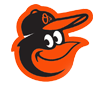PHILADELPHIA – When James Wood grounded into a double play with the bases loaded in the top of the eighth Sunday afternoon, there was plenty of reason for the Nationals slugger to be disappointed in himself. That 4-6-3 twin-killing may have brought home his team’s first run of the day, but it spoiled a golden opportunity to score a lot more than that during what wound up a 3-2 loss to the Phillies.
The real surprise about Wood’s at-bat, though, was the fact he actually made contact yet didn’t record a hit in the process.
In one of the stranger weekend performances you’ll ever see, Wood finished the series 4-for-12 with one walk and seven strikeouts. Do the math, and you’ll figure out the unusual part of this: Every batted ball he produced turned into a hit, until that killer ground ball to second. He struck out in every other at-bat.
Wood has worked hard to snap himself out of the prolonged slump he was mired in through most of July and into the early stages of August. He entered Sunday’s game batting .304 with an .886 OPS over his previous 14 games, looking much more like the best version of himself from the season’s first half.
But he’s not all the way back. Because while Wood is finally hitting the ball hard again, he’s not hitting the ball enough overall, leading to a gargantuan strikeout total.
The 22-year-old already was a high-strikeout guy prior to his slump, but it was still manageable. Through his first 90 games of the season, he struck out in 26.1 percent of his plate appearances. He also walked in 14.3 percent of them, an excellent rate.
But over his last 38 games (a stretch that happens to coincide with Miguel Cairo’s promotion to interim manager following Davey Martinez’s firing), Wood has seen his strikeout rate soar to 43.2 percent, all while his walk rate has dwindled to 8.0 percent.
“He’s been better,” Cairo said. “I know he’s been striking out a little bit too much. But you’ve got to remember … he’s on pace to play more games than he’s ever played before. He’s going to be fine.”
What has led to the spike in strikeouts? At times, it seems like Wood is expanding his strike zone too much and whiffing at pitches he can’t reach (especially breaking balls and changeups below the knees). But at other times, it seems like he’s getting too passive and taking called third strikes inside the zone (especially fastballs that are catching him off-guard).
“It’s probably just chase,” Wood said when asked what he thinks has led to the high K rate. “I could be making better swing decisions and just working the pitcher a little bit better and having better at-bats overall.”
Cairo sees the other side of the equation, as well.
“Maybe a little taking too much,” the interim manager said. “But they’ve been pitching good to him. Pitchers are making an adjustment on him. Now he’s just going to make his own adjustment.”
There’s still time for Wood to make those necessary adjustments and get himself back on track. But with 32 games remaining on the schedule, he’s flirting a little too much with a record nobody wants to hold.
Wood has now struck out 174 times this season, tops in the majors. (It’s worth noting that most of the others on the strikeout leaderboard are star players themselves: Riley Greene, Shohei Ohtani, Kyle Schwarber, Cal Raleigh, Rafael Devers).
Strikeouts have been up across baseball in recent years, and the negative stigma that used to be attached to them doesn’t really exist anymore. And yet the single-season record for strikeouts (223 by Diamondbacks third baseman Mark Reynolds in 2009) has been intact for 16 years.
Wood would need to strike out 50 more times to set the record. That sounds like an awfully high total, but he could get there if he merely strikes out in roughly 36 percent of his remaining plate appearances this season. That would actually constitute improvement over his recent sky-high rate.
In the meantime, he’s going to continue focusing on the positives, like the hard contact he’s been making the last two weeks. While also trying to remember what got him here in the first place: a rare combination of power and plate discipline most big league hitters would kill to have themselves.
“I just think it’s more approach than anything, pitch selection,” he said. “That’s what (opposing pitchers) are good at, too. They’re doing their best to keep you off-balance. You’ve got to go up there with a plan and just stick with it.”




-1745819772711.png)

